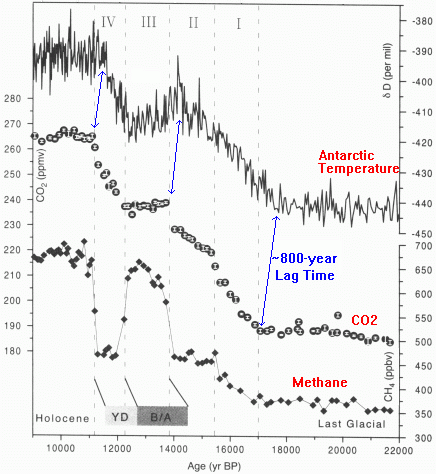This article discusses that it is the the gas concentration that lags temperature, and the lag time is 800 years. Normally it is regarded that gases such as CO2 are causing the temperature rise, but he argues that the causality is in the other direction. This thinking is very much against the current convention in America.
See the graphic given just below

Motls is an interesting fellow, and it may be worth following his blog.
Maybe it should not come as a surprise that someone found causality in the reverse direction. This makes sense from the point of view of equilibrium. At one time before "global warming", planet earth's ecosystem was at equilibrium. This means that the co2 that was present resulted in some heat absorption. But it also means that there is a reverse mechanism in which the temperature results in the co2 concentration. (At equilibrium each is the cause of the other because co2 and temperature are in balance.) Then when the system has been pushed out of equilibrium, the reverse mechanism is still operating, as noted in the above article. Equilibrium arguments must have the system balancing in both directions, and the article above seems to have noted the reverse balancing mechanism.
When the system is pushed out of equilibrium, it may be that the reverse mechanism is more powerful. The Motls article above seems to argue for this point.